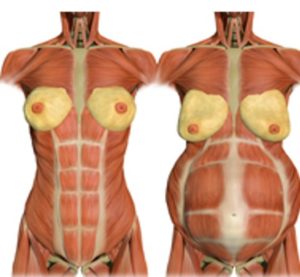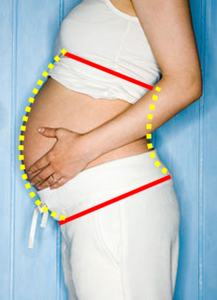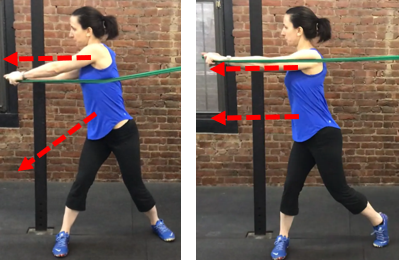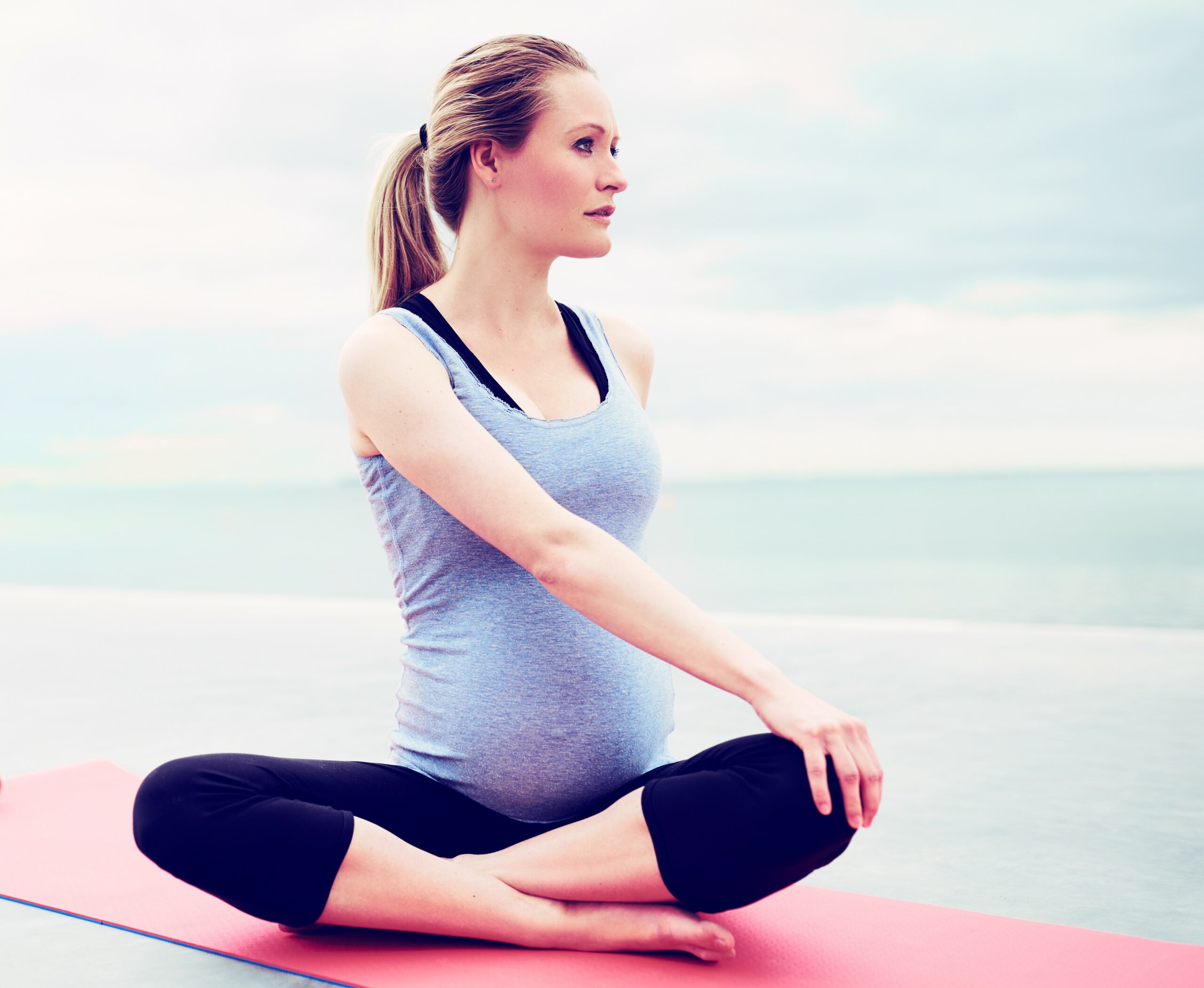One of the most common exercise-related questions that arises during pregnancy is whether or not it is safe to “twist.” In fact, the concern about twisting has made many pregnant people fearful of turning in bed, cracking their backs, or performing everyday tasks that require a little rotation.
First, let us be clear. You are not a robot. Nor should you try to move like one.
While there are definitely some movements that need to be altered as pregnancy progresses, there are many types of rotation that are safe — and actually beneficial — during pregnancy. In this article, we will explain what is meant by twisting (often used interchangeably with rotating) and clarify what type of movement is perfectly fine, and what you want to avoid as pregnancy progresses.
First, there is some key anatomy to understand so that you can appreciate where the guidance to “avoid twisting” comes from.
Anatomical Changes During Pregnancy
During pregnancy, there are two key changes that increase the stress on the outer abdominal wall. First, as the belly grows, it increases the pressure in the abdominal cavity, or intra-abdominal pressure (IAP). This increased pressure pushes outward onto the abdominal wall, which thins and weakens the connective tissue — called the linea alba — that runs in between the left and right sides of the rectus abdominis (“6-pack”) muscle.
In the photo below, you can see the linea alba in a non-pregnant individual on the left (a very thin line down the center of the abdomen). Then, see how it stretches during pregnancy in the image on the right. This stretching of the linea alba tissue leads to a widening of the gap between the left and right sides of the rectus abdominis muscle, otherwise known as diastasis recti (which is, to some degree, a normal and necessary pregnancy adaptation).

The other factor that increases stress on the outer abdominal wall is the common pregnancy alignment shifts. As the belly grows, it tends to tip the pelvis forward, as you can see in the image below (notice how the belly button is pointing downward toward the ground). This not only compresses the tissues in the low back (no wonder low back pain is so common!), but it also further increases the stress on the linea alba tissue.

With the elevated IAP and alignment shifts increasing the stress on the linea alba tissue, it’s important to avoid activities that could further accentuate this pressure. This is where the “twisting” precaution comes in.
Rotation: What to Focus On & What to Avoid
Beginning in the second trimester — or once you develop an obvious belly — you want to avoid exercises that involve rotation with dissociation of hips and shoulders. This means rotation where your shoulders move one direction, but your hips don’t follow along to the same degree. You can see an example of this in the left image below. The shoulders are turned directly to the side wall, but the hips did not move the same amount. This type of rotation, or twisting, places excess stress on the linea alba tissue.
That said, exercises that involve rotation in which the hips and shoulders move together as a unit are safe and beneficial. You can see an example of this in the right image below. Notice how the shoulders and hips moved in the same direction as one cohesive unit. This type of rotation does not add any further stress to the linea alba tissue.

Beneficial Rotation Exercises
Any time you are rotating, but working to keep your trunk in neutral alignment (hips and shoulders in line), this is beneficial because you are utilizing your deep core muscles to preserve this alignment (which strengthens them) while avoiding placing any additional stress on the outer abdominal wall. Below are a few examples of rotation with a neutral trunk:
Important Technique Points
When performing the exercises above, keep in mind the following two important technique points to ensure you are practicing safe and beneficial rotation:
- Initiate the turn with your rear foot: It may seem surprising, but twisting actually begins at ground level. Specifically, your turn is a result of how well you pivot off of your rear foot. If you look at the photos above again, you’ll notice the difference in the rear foot positions. Therefore, you want to think about initiating your turn by swiveling your back foot (like you are putting out a cigarette butt!). The more you pivot your foot, the more efficient your turn, and the better able you’ll be to preserve the “slice,” as discussed next.
- Preserve the “slice”: All these exercises have you hold out your arms in front and clasp your hands together (same as illustrated in the photos above). Notice that when you do this, your arms and trunk form a triangle. Think of this triangle as your pizza, or pie, “slice” (whichever one you find tastier😊). The goal with rotation is to preserve the shape of the slice as you move the trunk as one cohesive unit. If you find that your arms want to bend, focus harder on pivoting your rear foot to generate a stronger turn.
When “Twisting” is Perfectly Fine
We do want to add one important clarification to the guidance above to allay any unnecessary fears. While it is important to avoid exercises involving dissociation of hips and shoulders during pregnancy, it is perfectly safe to twist during pregnancy when unloaded. This means that you can perform light stretching (like the cover image of this blog post!), reach for a seatbelt in the backseat, turn in bed, crack your back, and perform any other daily task that requires you to move your shoulders farther than your hips. You will be fine, and your baby will be fine. The goal is not to move through life like a robot. You can do “normal” things without fear, because our bodies were built for this.
Want Additional Resources?
For additional resources to help you exercise safely and effectively during pregnancy, explore our training programs and services. You’ll find a variety of offerings tailored to different needs — from education, to self-guided programs, to the ability to work with an expert coach.
Or, if you’re a health & fitness pro interested in coaching pre & postnatal clients, check out our ProNatal Education & Certification.
